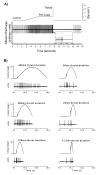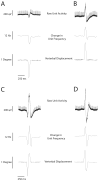Spinal manipulative therapy and somatosensory activation
- PMID: 22349622
- PMCID: PMC3399029
- DOI: 10.1016/j.jelekin.2012.01.015
Spinal manipulative therapy and somatosensory activation
Abstract
Manually-applied movement and mobilization of body parts as a healing activity has been used for centuries. A relatively high velocity, low amplitude force applied to the vertebral column with therapeutic intent, referred to as spinal manipulative therapy (SMT), is one such activity. It is most commonly used by chiropractors, but other healthcare practitioners including osteopaths and physiotherapists also perform SMT. The mechanisms responsible for the therapeutic effects of SMT remain unclear. Early theories proposed that the nervous system mediates the effects of SMT. The goal of this article is to briefly update our knowledge regarding several physical characteristics of an applied SMT, and review what is known about the signaling characteristics of sensory neurons innervating the vertebral column in response to spinal manipulation. Based upon the experimental literature, we propose that SMT may produce a sustained change in the synaptic efficacy of central neurons by evoking a high frequency, bursting discharge from several types of dynamically-sensitive, mechanosensitive paraspinal primary afferent neurons.
Copyright © 2012 Elsevier Ltd. All rights reserved.
Figures



References
-
- Bolton PS. The somatosensory system of the neck and its effects on the central nervous system. Journal of Manipulative Physiological and Therapeutics. 1998;21(8):553–63. - PubMed
Publication types
MeSH terms
Grants and funding
LinkOut - more resources
Full Text Sources
Medical

